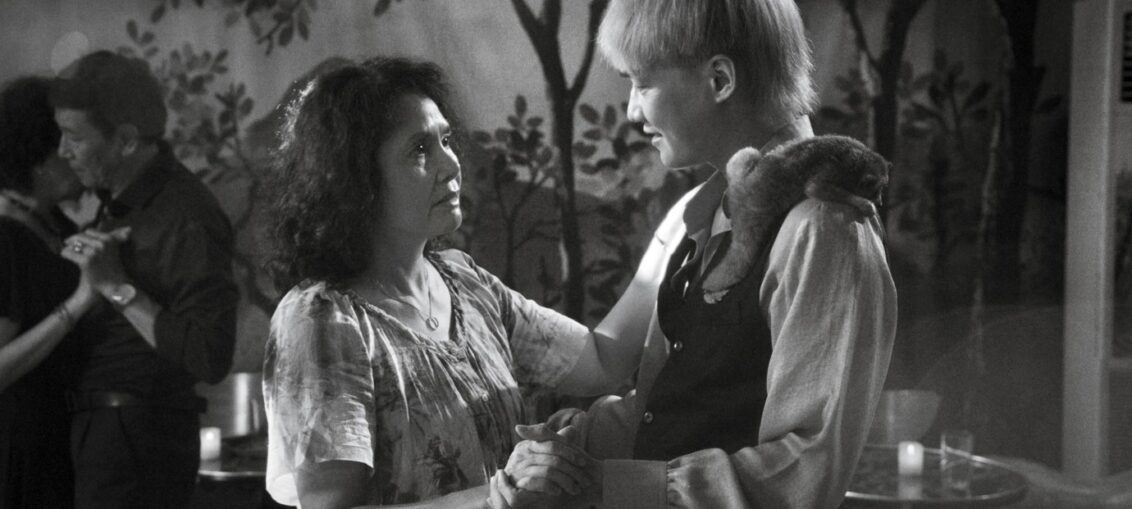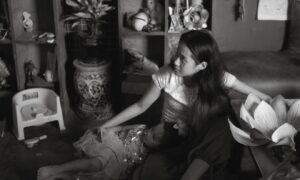
The critical gaze of Maria Vittoria from the Zoo Palast
(from Berlin Luigi Noera with the kind collaboration of Maria Vittoria Battaglia and Vittorio De Agrò of the editorial staff Ground floor– The photos are published courtesy of the #BERLINALE)
Conflict between the present and the past, a present that has never felt familiar in the first work from Vietnam
 #CuLiNeverCries di Lan Pham Ngoc presentato a #Panorama
#CuLiNeverCries di Lan Pham Ngoc presentato a #Panorama
Synopsis: After inheriting a pygmy loris from her long-estranged husband, a woman clings to increasingly tenuous ties to her past as her granddaughter prepares for marriage and worries about the future.
Coolie Never Cry (#CuLiNeverCries) di Lan Pham Ngoc | Minh Chau Nguyen's son, Ha Hoang, Xuan An Ngo, Ha Phuong Le Thi – Vietnam / Philippines / France / Singapore / Norway 2024 | WP | First work
“I came home but it’s like beginning a journey to nowhere, not recognizing where I have been living. Home was not really home, and the familiar became foreign.”
The film opens on a dark and silent Hanoi, whose empty streets are crossed by a woman returning from Europe, where she had gone for the death of her husband whom she had not seen for decades. We immediately feel a sense of sadness, a bitter taste of melancholy, while a voice in the background states what will be the underlying theme of the story, that is, foreignness – the unfamiliarity -, a vague sense of unease and existential inconvenience. The theme is subtly underlined by the black and white and an unexpected and surreal background that dominates the film, the streets of Hanoi unusually empty and crossed by low clouds and heavy fog.
 After this brief incipit the narrative is divided into two parts, parallel, united by a few small points of contact. On the one hand we see the development of women's history, who brought with him from Europe a small monkey which he begins to take care of; on the other hand we instead witness the life of the niece, teacher, future mother, struggling with the preparations for a hasty wedding and in conflict with her aunt. In reality, the two parallel stories and the conflict between aunt and nephew are the perfect narrative device to give voice to the theme introduced in the incipit, that of the conflict between the present and the past, a present that has never felt familiar. For this reason, while the young woman prepares for the future, the protagonist looks to the past, returning to the places of the past, meeting old friends.
After this brief incipit the narrative is divided into two parts, parallel, united by a few small points of contact. On the one hand we see the development of women's history, who brought with him from Europe a small monkey which he begins to take care of; on the other hand we instead witness the life of the niece, teacher, future mother, struggling with the preparations for a hasty wedding and in conflict with her aunt. In reality, the two parallel stories and the conflict between aunt and nephew are the perfect narrative device to give voice to the theme introduced in the incipit, that of the conflict between the present and the past, a present that has never felt familiar. For this reason, while the young woman prepares for the future, the protagonist looks to the past, returning to the places of the past, meeting old friends.
finally, returning to the place where she had met her husband, decides to scatter her late husband's ashes there, in a cathartic act that allows her to let go of the past.
And so, finally ready to live in the present, however disconcerting and foreign, he can finally reconcile with his niece on their wedding day.
Maria Vittoria Battaglia
